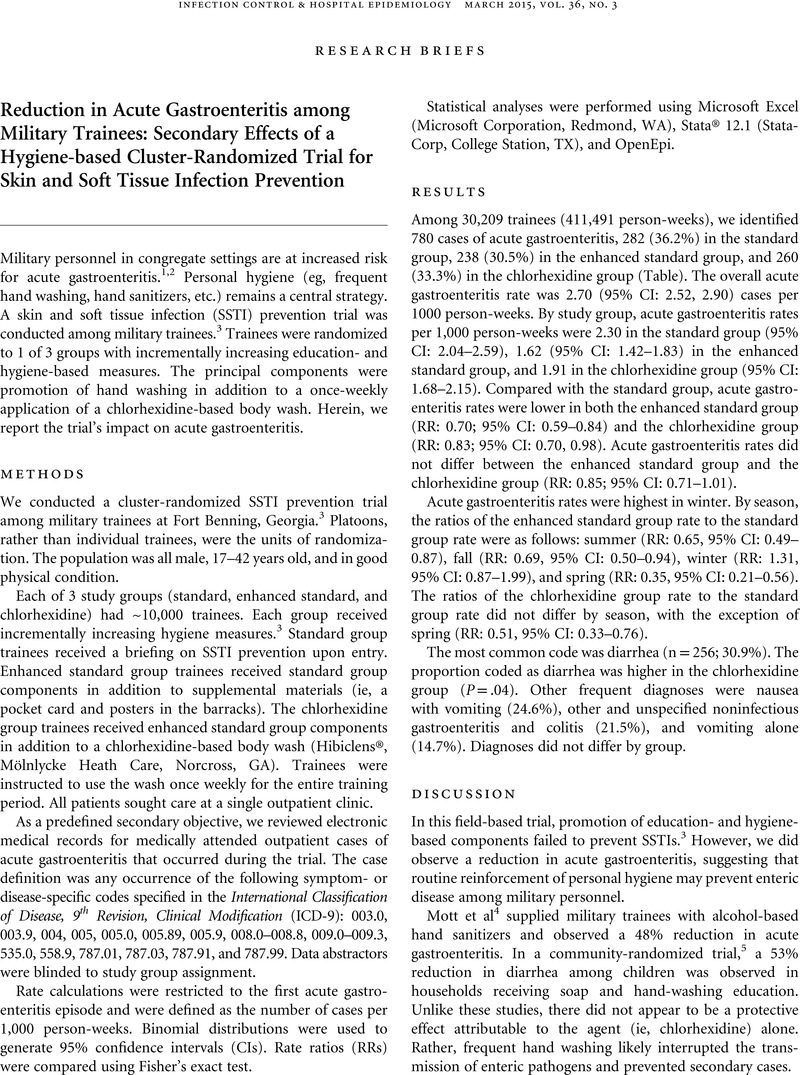Crossref Citations
This article has been cited by the following publications. This list is generated based on data provided by Crossref.
Millar, Eugene V.
Schlett, Carey D.
Law, Natasha N.
Chen, Wei-Ju
D’Onofrio, Michael J.
Bennett, Jason W.
Tribble, David R.
and
Ellis, Michael W.
2016.
Reduction in Acute Respiratory Infection Among Military Trainees: Secondary Effects of a Hygiene-Based Cluster-Randomized Trial for Skin and Soft-Tissue Infection Prevention.
Infection Control & Hospital Epidemiology,
Vol. 37,
Issue. 9,
p.
1118.



